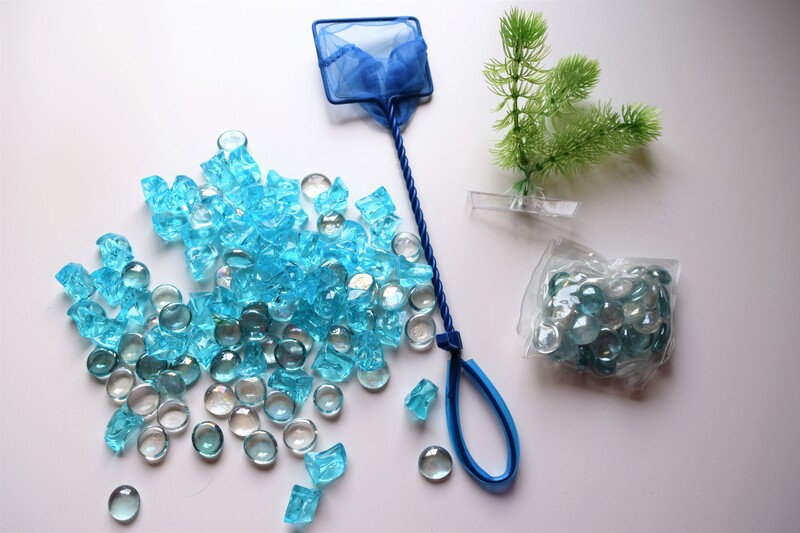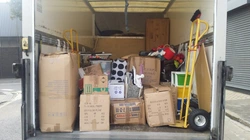Proven Techniques for Storing Sofas and Preventing Damage
Sofas are the centerpiece of comfort in our living rooms and lounges, but what happens when you need to store them for an extended period? Whether you're renovating, moving, or simply making space, storing sofas safely is crucial to preserve their quality, appearance, and structural integrity. This comprehensive guide covers proven sofa storage techniques and strategies for preventing damage, ensuring your cherished seating remains in top-notch condition for years to come.
Why Proper Sofa Storage is Important
Before diving into the best storage solutions, it's vital to understand why proper storage is essential. Sofas can suffer from a range of issues during storage, including:
- Mold and Mildew: Resulting from high humidity or dampness
- Pest Infestation: Rodents or insects nesting in upholstery or wood frames
- Physical Damage: Scratches, tears, or dents due to improper handling or stacking
- Warping: Caused by fluctuating temperature or moisture
- Fading: Prolonged exposure to sunlight or harsh lighting
By implementing effective sofa storage techniques, you can avoid these common pitfalls and keep your furniture in pristine condition.

Getting Your Sofa Ready for Storage
1. Deep Cleaning the Sofa
Cleanliness is the first step in preventing damage during sofa storage. Any dirt, crumbs, or moisture left behind can breed mold, stains, or odors.
- Remove all cushions and vacuum thoroughly in every crevice.
- Spot clean stains using the manufacturer's recommended method (e.g., water-based cleaner, solvent, or professional upholstery cleaner).
- If possible, wash removable covers and allow them to dry completely before storing.
- For leather sofas, use a specialized leather cleaner and conditioner.
2. Disassemble When Possible
Large sofas are often easier to transport and store safely when disassembled. This also helps to avoid damage during moving and in storage units with limited space.
- Remove legs, armrests, and detachable cushions.
- Keep all bolts, screws, and small parts in a labeled bag taped to a main frame piece.
- Photograph each step for easy reassembly.
3. Prepping Upholstery and Wood
Before wrapping and storing your sofa, treat its surfaces to protect against environmental threats.
- Apply protective spray to fabric sofas to guard against moisture and pests.
- Condition wood arms or frames with appropriate polish or oil.
How to Protect Sofas in Storage: Wrapping and Covering
1. Use Breathable Covers
Many make the mistake of wrapping furniture in plastic, which can trap moisture and cause mildew. Instead, opt for breathable fabric covers or moving blankets.
- Do not use airtight plastic wrap for long-term storage.
- Cotton sheets or specially designed sofa covers prevent dust and let air circulate.
2. Padding and Wrapping the Frame
For extra protection against dings and scratches, wrap arms and legs in bubble wrap or thick cloth. Padded corners are especially important for wooden or metal accents.
3. Elevate Off the Floor
Place the sofa on wooden pallets or blocks. This prevents moisture from the storage unit's floor from seeping in and allows for airflow beneath the furniture.
Storing Sofas in a Storage Unit: Best Practices
1. Choose Climate-Controlled Storage
The biggest enemy of sofas in storage is humidity and temperature fluctuations. A climate-controlled storage unit reduces the risk of:
- Mildew and mold on upholstery
- Wood warping or splitting
- Metal components rusting
- Fabrics fading or degrading
If a climate-controlled facility isn't possible, make sure to use moisture absorbers and check the unit regularly.
2. Position Sofas Properly
Never store a sofa on its end or back, as this puts unnecessary pressure on joints and upholstery, potentially causing warping and sagging.
- Always store sofas flat, as if they were sitting in your living room.
- Provide enough space around each piece to avoid accidental impacts when moving other items.
3. Avoid Stacking
Stacking heavy items on top of your sofa is never advisable. Even lightweight boxes can leave impressions or cause structure damage over months in storage.
4. Use Pest Deterrents
Place pest repellents or traps around your storage space. Check with your storage facility about approved pest control options to avoid attracting rodents or insects.
Safeguarding Sofa Materials: Specific Tips
For Fabric Sofas:
- Use mothballs or cedar chips inside cushion storage bags.
- Ensure complete cleanliness--vacuuming and washing covers where possible.
- Use moisture absorbers inside the storage area.
For Leather Sofas:
- Condition the leather before storage to maintain flexibility and prevent cracks.
- Avoid covering with plastic; use a soft, breathable cover.
- Keep out of direct sunlight or artificial lighting to prevent discoloration.
For Wood-Framed Sofas:
- Polish and treat wood surfaces.
- Use felt pads between wooden parts and any other stored items.
- Elevate the sofa to avoid floor moisture and warping.
Long-Term Versus Short-Term Sofa Storage Techniques
Short-Term Storage (Less than One Month)
- Basic cleaning and coverage may suffice.
- Keep sofa in a dry, shaded place, avoiding direct sun and damp spaces.
- Quickly check for pests and moisture issues upon retrieval.
Long-Term Storage (More than One Month)
- Follow every step: deep cleaning, full wrap, disassembly, and climate control.
- Consider labeling each part, especially hardware, for quick assembly later.
- Inspect storage space regularly, especially after storms or high humidity periods.
How to Prevent Damage During Sofa Transportation
1. Plan and Prepare
Measure your sofa and the path it must travel--doorways, hallways, stairs--to minimize tight squeezes or accidental impacts.
2. Use Quality Packing Materials
- Use moving blankets for all surfaces, even for short moves.
- Plastic wrap (for brief moves only) can help keep parts from shifting but avoid using on leather or for extended periods.
3. Secure During Transport
Don't let the sofa move freely in the truck. Strap it down to keep it stationary and prevent knocks, vibration, and tipping during transit.
Frequently Asked Questions about Sofa Storage
Can I Store My Sofa in My Garage or Basement?
While convenient, garages and basements are prone to dampness and temperature swings, making them a poor choice for safe sofa storage. If unavoidable, elevate your sofa, use moisture absorbers, and ensure sufficient ventilation to mitigate risks.
How Often Should I Check My Stored Sofa?
If possible, check your sofa monthly. Look for signs of moisture, pests, or shifting, and address any issues immediately to prevent long-term damage.
Should I Cover My Sofa With Plastic?
Avoid using plastic for long-term sofa storage. It traps condensation and can cause mildew and odors. Stick with breathable materials for best results.
Is Insurance Necessary for Stored Furniture?
Storage insurance can provide peace of mind against theft, fire, or extreme weather. Check your homeowner's policy or consider supplemental coverage offered by storage facilities.
Professional Sofa Storage Services: Are They Worth It?
If your sofa is valuable, antique, or you lack time and resources, consider a professional furniture storage service. They offer climate-controlled environments, expert packing, and regular inspections.
- Ideal for luxury, designer, or heirloom sofas.
- Minimizes risk of costly damage or loss.

Summary: Key Takeaways for Optimal Sofa Storage
- Clean, disassemble, and treat your sofa before storage.
- Use breathable covers, padding, and store on pallets to prevent common damage.
- Choose climate-controlled storage units whenever possible.
- Position your sofa properly--never on ends or stacked under heavy objects.
- Monitor your storage space regularly for pests and moisture.
By applying these proven methods for storing sofas, you'll keep your furniture looking and feeling like new, no matter how long it's out of use. Invest a little time and care now, and your sofa will remain the welcoming, cozy anchor of your living space for years to come.
Conclusion
Proper sofa storage is not only about saving space but about preserving your investment. Following these expert-approved techniques will help you avoid the most common mistakes and ensure your sofa is ready to provide comfort and style upon its return. For more guidance and tips on maintaining your furniture, browse related articles or consult with storage professionals in your area. Storing your sofa safely truly pays off in the long run!


